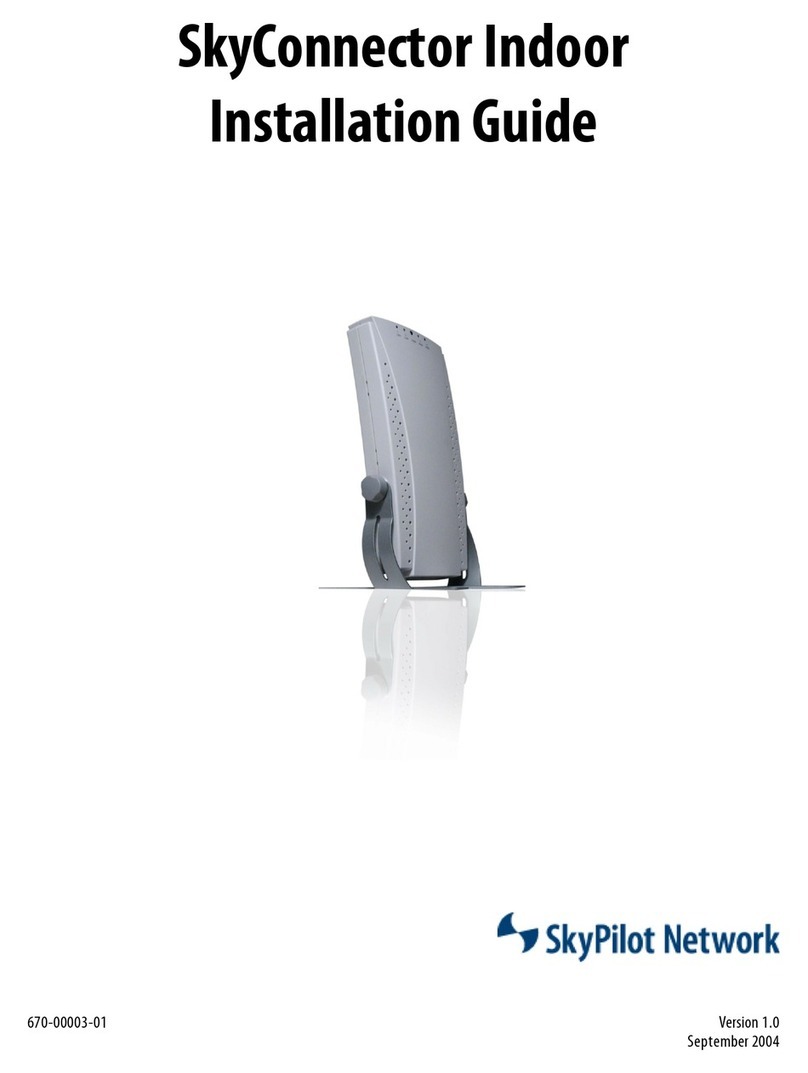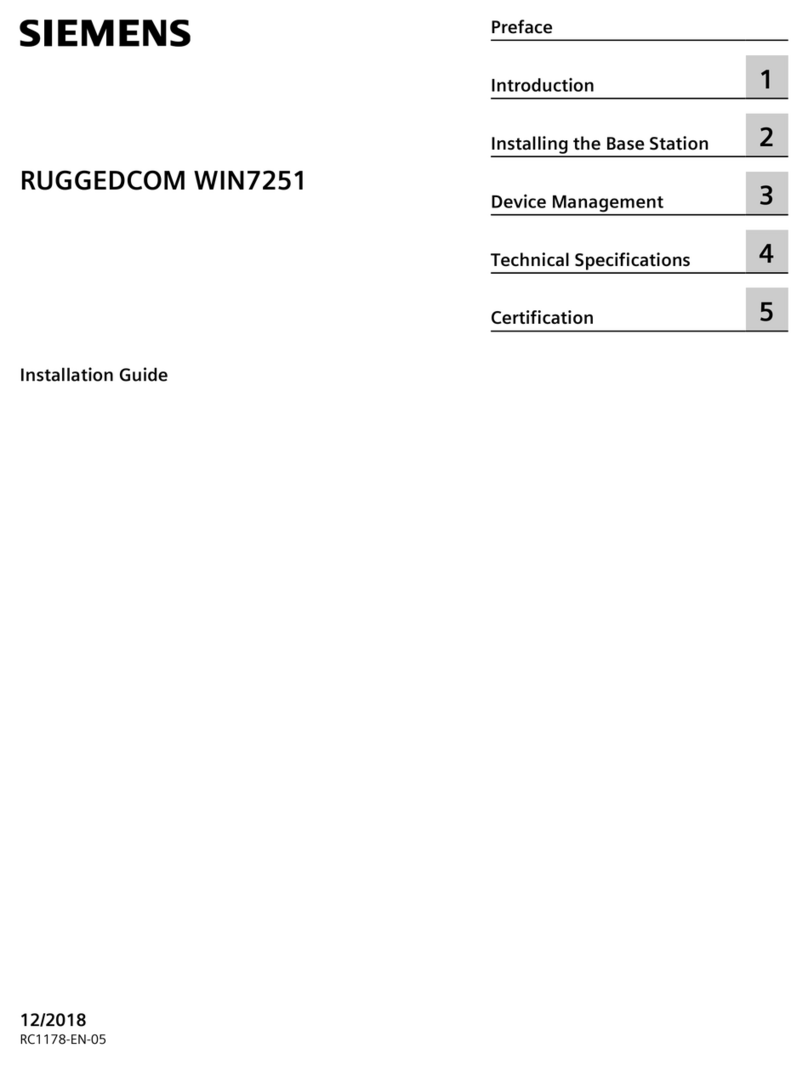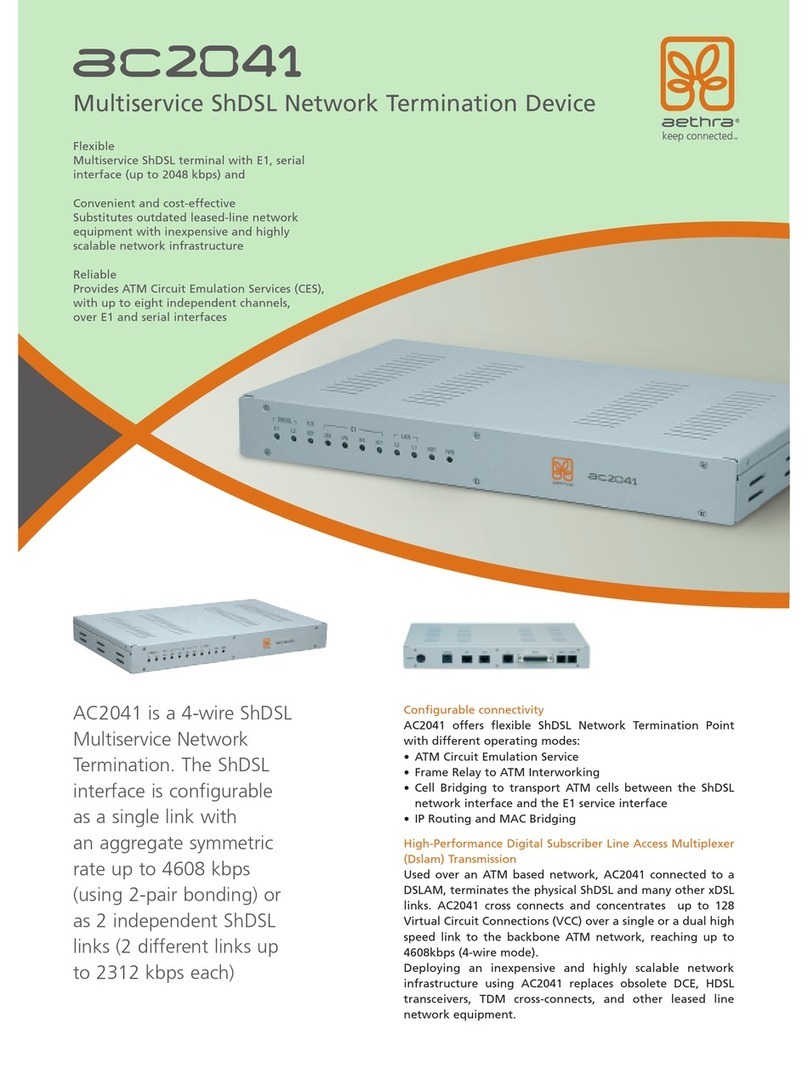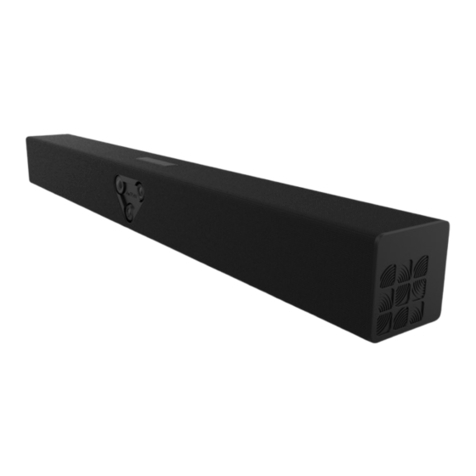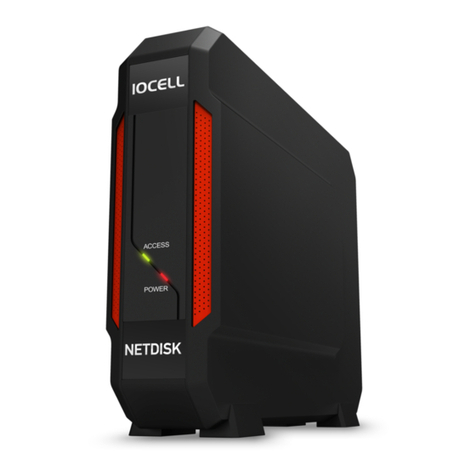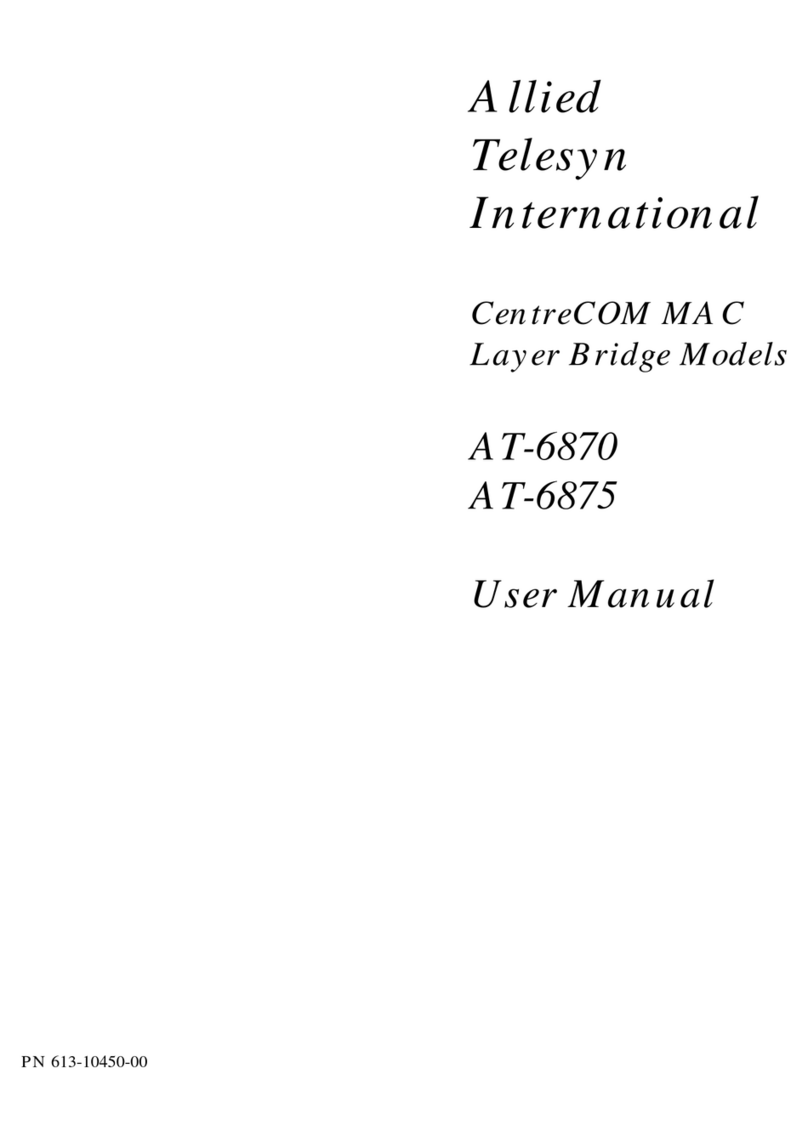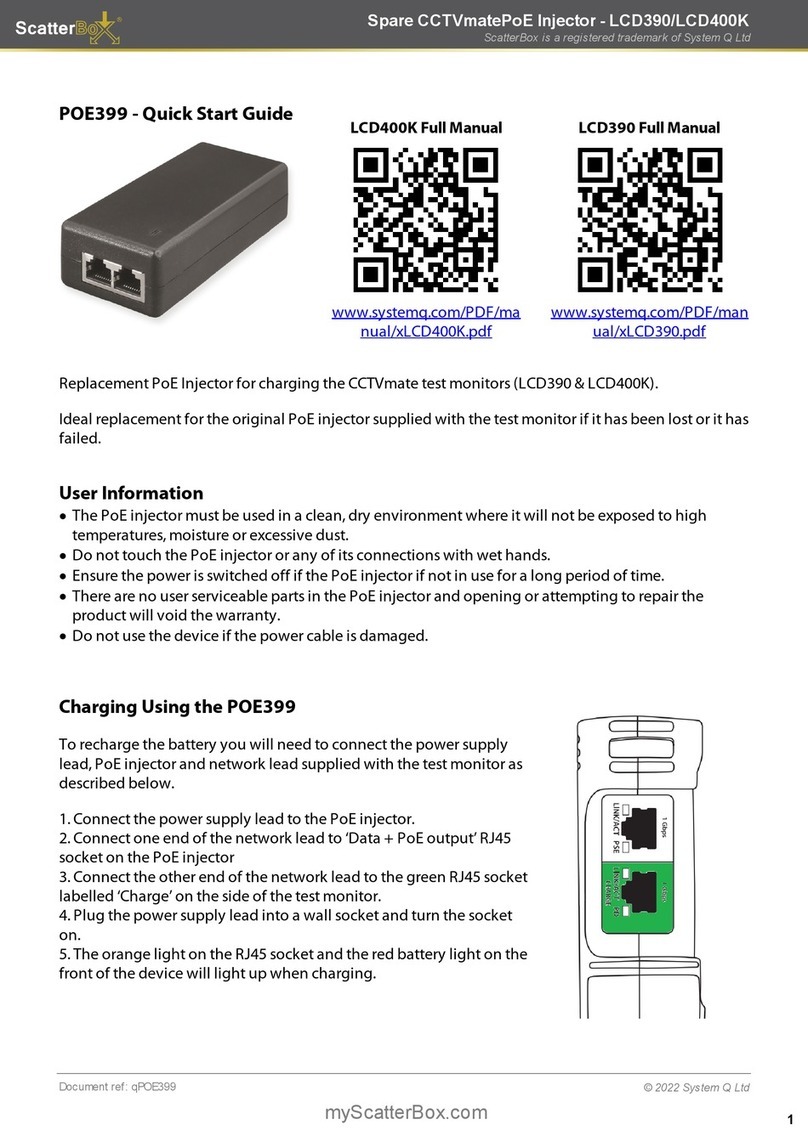SkyPilot SkyConnector Outdoor User manual

SkyPilot
SkyConnector Outdoor
Installation


Contents
About This Guide 5
Audience and Purpose 6
How This Guide Is Organized 6
Conventions Used in This Guide 7
Chapter 1 Introduction 9
Solution Overview 10
Mesh Network 10
SkyGateway 12
SkyExtender Devices 12
SkyConnector and SkyAccess DualBand 13
Chapter 2 The SkyConnector Outdoor Installation Kit 15
Kit Contents 16
What Else You Need 16
Chapter 3 Installing a SkyConnector 19
Planning your Installation 20
Cabling the SkyConnector 21
Powering on the SkyConnector 23
Optimizing Location 26
Monitoring SkyConnector Status 28
Mounting the SkyConnector 29
Configuring the SkyConnector 31
Accessing the Command-Line Interface 32
Troubleshooting 33
Appendix A Grounding Guidelines 35
General Grounding Strategy 35
Making Connections “Gas-Tight” 36
Checking Cold-Water Pipe Integrity 37
Measuring Resistance 37
Adding Surge Protection 37
Grounding Checklist 38
Appendix B FCC Statements 39


About This Guide
This guide explains how to install and set up a SkyPilot™ SkyConnector™
Outdoor to provide wireless network access to users of a SkyPilot wireless mesh
network. It assumes administrator-level knowledge of IP networks and a
familiarity with configuring wireless devices.
Chapter Highlights
• Audience and purpose
• How this guide is organized
• Conventions used in this guide

SkyPilot SkyAccess DualBand Installation 6
Audience and Purpose
This guide provides directions for installing and setting up a SkyPilot
SkyConnector Outdoor device that can provide access to users of a SkyPilot
wireless mesh network.
This guide assumes administrator-level knowledge of IP networks and a
familiarity with configuring wireless devices.
How This Guide Is Organized
This guide is organized as follows:
• Chapter , “ 1,” provides an overview of the SkyPilot Networks solution,
describes the SkyPilot devices, and then illustrates how they combine to form
a mesh network.
• Chapter , “2,” provides the information you need before you begin your
installation.
• Chapter , “ 3,” provides instructions for the physical installation of the
SkyConnector Outdoor as well as background information about configuration
and references to associated procedures.
• Appendix , “ A,” provides direction on protecting your SkyPilot device with
proper grounding and surge protection.
• Appendix , “ Error! Reference source not found.,” provides the FCC radio
frequency interference statements for the SkyConnector Outdoor.
• Appendix , “ C” provides technical specifications for the SkyConnector
Outdoor.

SkyPilot SkyAccess DualBand Installation 7
Conventions Used in This Guide
This section describes the text and syntax conventions used throughout this
guide.
Text Conventions
This guide uses the following text conventions:
• Italic is used to introduce new terms.
• Bold is used to indicate what you click or type in a graphical user interface
(for example, commands names or text being entered). In examples showing
user interaction with the command-line interface, bold is used to indicate user
input as opposed to command output.
• A monospace font is used for code elements (variable names, data values,
function names, and so forth), command lines, scripts, and source code
listings.
• Italic-monospace is used for replaceable elements and placeholders within
code listings.
Syntax Conventions
This guide uses the following conventions when showing syntax:
• Angle brackets, “<“ and “>”, enclose mandatory elements. You must enter
these elements. For example:
ping <IP-address>
• Square brackets, “[“ and “]”, enclose optional elements. You can omit these
elements. For example:
show filter [filter-table-number]
Square brackets are also used to show the current value of parameters in
the output of some commands.
• A vertical bar, “|”, separates choices. For example:
show bridge [cache | port]


SkyPilot SkyAccess DualBand Installation 9
Introduction
This chapter provides an overview of the SkyPilot Networks solution,
describes the SkyPilot devices, and then illustrates how they combine to
form a mesh network.
Chapter Highlights
• Solution overview
• Mesh network
• SkyGateway
• SkyExtender devices
• SkyConnector
1

SkyPilot SkyAccess DualBand Installation 10
Solution Overview
SkyPilot Networks delivers a wireless, end-to-end broadband solution
that seamlessly supports high-capacity, high-coverage mesh networks.
Designed for managed-access networks and service providers, the
SkyPilot network takes broadband wireless the “last mile” with a cost-
effective, robust infrastructure solution.
Based on a high-performance architecture that deploys intelligent
antenna arrays, the SkyPilot network delivers a dynamic broadband
solution with significant advantages for business and home users.
SkyPilot wireless devices are simple to install and easily fit into any type
of wireless environment—metropolitan, business, or home.
The auto-discovery and rapid provisioning features of a SkyPilot wireless
mesh network can greatly reduce deployment and maintenance costs.
Multiple topology options and network scalability create intriguing options
for rapidly expanding a metro Wi-Fi customer base.
SkyPilot devices’ multiple antenna configurations work within mixed-use
environments of municipal applications and broadband Internet access,
supporting public-private partnerships such as public safety services.
Mesh Network
The typical configuration for a SkyPilot network is a mesh topology, which
uses SkyExtenders to extend range and add network flexibility. In a mesh
configuration, subscribers can either connect directly to the SkyGateway
or connect indirectly via SkyExtenders (see Figure ). In addition to
adding range, a mesh network allows connections from locations where
obstructions prevent line-of-sight access to a SkyGateway hub.
Mesh networks are ideal for dense subscriber environments, for filling in
coverage “holes,” and for reaching subscribers in areas where RF
communication is obstructed by hills, trees, buildings, or other obstacles.

SkyPilot SkyAccess DualBand Installation 11
Figure 1. SkyPilot wireless mesh network

SkyPilot SkyAccess DualBand Installation 12
SkyGateway
The SkyGateway operates as a base station for a wireless mesh
network. It provides an interface between wired infrastructure and a
wireless network of subscribers who enjoy secure, high-speed access to
the Internet or to wide area networks.
A SkyPilot wireless network requires at least one SkyGateway for
operation. If necessary, you can add additional SkyGateways to increase
network capacity or provide redundancy.
The SkyGateway typically resides at a location with easy access to wired
infrastructure—usually a POP (point of presence) or data center.
For optimal performance, install the SkyGateway on an elevated site
such as a cell tower or the top of a tall building.
SkyExtender Devices
SkyExtenders, SkyExtender DualBands, and SkyExtender TriBands
provide a cost-effective way to add capacity and balance network loads
by operating as “repeaters” to extend the wireless range of a
SkyGateway (see Figure ). You can add any SkyExtender device to
your network to expand your coverage footprint and provide redundancy
through SkyPilot’s mesh networking features. SkyExtender devices
(except DualBands) can provide subscribers with a direct connection to
the wireless network via the device’s Ethernet port.
SkyExtender DualBand is a dual-radio solution that combines SkyPilot’s
long-range, high-capacity 5 GHz mesh backhaul with a high-powered 2.4
GHz 802.11b/g access point that allows service providers and
municipalities to offer standard Wi-Fi services over great distances—for
targeted hot zones or dense, ubiquitous coverage patterns.
SkyExtender TriBand integrates a 5.8 GHz mesh backhaul with the
DualBand’s access point and adds a third radio accessible through a
second access point. The second access point leverages the 4.9 GHz
Public Safety band, using 802.11a communication protocol. Each access
point uses a single antenna, and these

SkyPilot SkyAccess DualBand Installation 13
antennas have similar coverage patterns, providing a cost-effective
solution for municipal networks.
For optimal performance, install the SkyExtender in an elevated location
such as a roof, tower, or utility pole.
SkyConnector and SkyAccess DualBand
SkyConnectors link your subscribers to the SkyPilot wireless network. An
Ethernet port on the device allows a connection to a subscriber’s
computer, or to a local area network (LAN) via a data switch or router.
Designed for installation by the service provider, the SkyConnector
attaches to an external structure such as an eave, roof, or pole.
The SkyAccess DualBand offers the same features as a SkyConnector,
plus a Wi-Fi access point that enables service providers and
municipalities to provide standard 802.11 wireless access over great
distances, for targeted hot zones, or for dense coverage patterns.


SkyPilot SkyAccess DualBand Installation 15
The SkyConnector Outdoor
Installation Kit
Your SkyPilot SkyConnector Outdoor installation kit provides the basic
equipment you need to install the device and configure it for operation on
a SkyPilot wireless mesh network. This chapter describes that equipment
and lists additional items you should have on hand before starting
installation.
Chapter Highlights
• Kit contents
• What else you need
2

SkyPilot SkyAccess DualBand Installation 16
Kit Contents
Figure 2-1 shows the contents of the SkyConnector Outdoor installation
kit.
Figure 2-1. SkyPilot Outdoor installation kit
SkyPilot separately offers accessories for different types of installation,
including a surge suppressor and a tilt mount kit. For more information,
visit the SkyPilot website at www.skypilot.com/support/.
What Else You Need
Before starting installation, you also need the following:
• For basic mounting:
o Phillips screwdriver
• For pole mounting:

SkyPilot SkyAccess DualBand Installation 17
o Magnetic level
o Steel pole between 1 1/8" (2.87 cm) and 1 3/8" (3.48 cm) in
diameter
• For network cabling:
o A spool of CAT5 network cable (shielded cable is
recommended)
NOTE Ethernet cabling must comply with NEC/CEC
requirements for outdoor CAT-5 cables. The cabling’s
outer jacket must be clearly marked as CAT-5e per
ANSI/TIA/EIA-568-B.2.
o Crossover cable (for connecting to a an access point, switch,
or router)
o RJ-45 connectors (connectors without a protective “boot” are
recommended)
o RJ-45 crimping tool
• For configuration:
o Computer with a serial port, a terminal emulation program, a
network interface card, and a Web browser (laptop
recommended for convenience)


SkyPilot SkyAccess DualBand Installation 19
Installing a SkyConnector
This chapter provides instructions for planning and performing the
physical installation of a SkyConnector Outdoor.
Chapter Highlights
• Planning your installation
• Cabling
• Powering up the SkyConnector
• Optimizing location
• Monitoring SkyConnector status
• Mounting
• Configuring the SkyConnector
• Accessing the command-line interface
• Troubleshooting
3

SkyPilot SkyAccess DualBand Installation 20
Planning your Installation
In a typical wide area wireless mesh network, you’ll install a
SkyConnector on a utility pole or the roof of a building. The effective
range of a SkyConnector is usually proportional to the height of the
installation.
When choosing a site for a SkyConnector Outdoor, consider the radio
frequency (RF) environment and the physical layout of the area.
Trees, buildings, and hills can attenuate or block a wireless signal. When
assessing a site, examine the overall topology of the wireless path for
possible obstructions—both existing and planned—as well as seasonal
changes of foliage and tree growth. The RF environment is dynamic, and
can deteriorate over time as structures appear or are relocated.
Plan to use test signals to determine the suitability of the link topology for
target applications. Interference on your desired frequency results in
overlapping signals, causing outages or intermittent drops in throughput.
Once you’ve identified a potential site, use a topographic map or path
profile software to ensure that terrain or obstacles will not interfere with
the links.
Your site survey should include an RF scan to identify available
frequencies. You should also check your preferred frequency at all
locations. A frequency that’s clear at one location may be crowded at
another. Frequency planning is a critical factor in planning and
implementing a wireless network. (For device operating frequencies, see
Appendix , “ C.” )
The site survey process should be ongoing. To verify that a site is
relatively free of interference, make site audits every six to twelve
months, scheduling regular maintenance visits to coincide with the site
audits.
NOTE Plan to configure the SkyConnector Outdoor before mounting it.
Some steps, such as those requiring serial console access, are
Other manuals for SkyConnector Outdoor
1
Table of contents
Other SkyPilot Network Hardware manuals
Popular Network Hardware manuals by other brands

chinavasion
chinavasion 4CH Quick installation guide
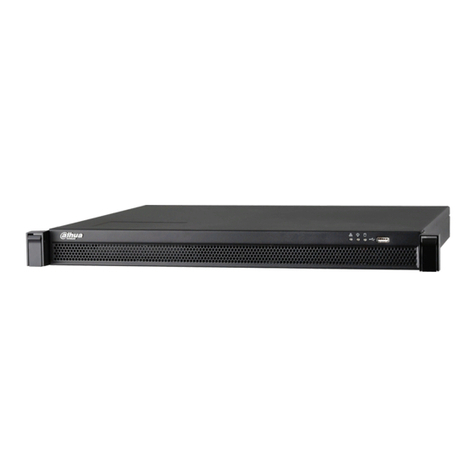
Dahua Technology
Dahua Technology NVR41 Series user manual
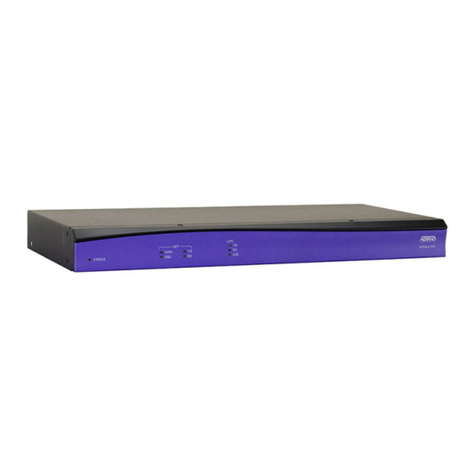
ADTRAN
ADTRAN NetVanta 1335 Series Quick reference guide

Furukawa electric
Furukawa electric FBS LightDrive LD2500 Series installation guide
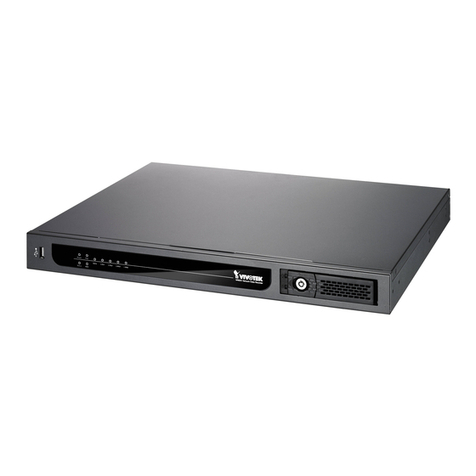
Vivotek
Vivotek NR8201 Technical specifications

Ericsson
Ericsson MINI-LINK 6351 Technical description
